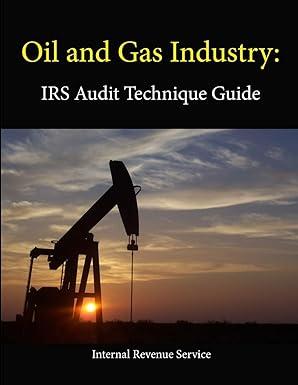Question
double checking my multiple choice answers thank you. 1.A company has 30,000 shares of common stock outstanding. The stockholders' equity applicable to common shares is
double checking my multiple choice answers thank you.
| 1.A company has 30,000 shares of common stock outstanding. The stockholders' equity applicable to common shares is $382,500, and the par value per common share is $10. The book value per share is: |
$2.75.
($12.75.)
$38.25.
$10.00.
$0.08.
| 2.A company has 550 shares of $50 par value preferred stock outstanding, and the call price of its preferred stock is $62 per share. It also has 22,000 shares of common stock outstanding, and the total value of its stockholders' equity is $753,500. The company's book value per common share equals: |
($32.70.)
$33.00.
$33.41.
$31.90.
$34.25.
| 3.A corporation had 44,000 shares of $20 par value common stock outstanding on July 1. Later that day the board of directors declared a 5% stock dividend when the market value of each share was $29. The entry to record this dividend is: |
Debit Retained Earnings $44,000; credit Common Stock Dividend Distributable $44,000.
Debit Retained Earnings $63,800; credit Common Stock Dividend Distributable $44,000; credit Paid-In Capital in Excess of Par Value, Common Stock $19,800.
(Debit Retained Earnings $63,800; credit Common Stock Dividend Distributable $63,800.)
No entry is made until the stock is issued.
Debit Retained Earnings $63,800; credit Cash $63,800.
| 4.Shamrock Company had net income of $32,370. The weighted-average common shares outstanding were 8,300. The company sold 3,300 shares before the end of the year. There were no other stock transactions. The company's earnings per share is: |
($9.81.)
$2.79.
$5.36.
$6.47.
$3.90.
| 5.Shamrock Company had net income of $31,570. The weighted-average common shares outstanding were 8,200. The company declared a $2,900 dividend on its noncumulative, nonparticipating preferred stock. There were no other stock transactions. The company's earnings per share is: |
$3.95.
($3.25.)
$4.20.
$3.50.
$3.85.
| 6.A company issued 65 shares of $100 par value stock for $7,500 cash. The total amount of paid-in capital is: |
$6,500.
$100.
$7,500.
$650.
$1,000.
| 7.A corporation was formed on January 1. The corporate charter authorized 100,000 shares of $10 par value common stock. During the first month of operation, the corporation issued 330 shares to its attorneys in payment of a $5,300 charge for drawing up the articles of incorporation. The entry to record this transaction would include: |
A debit to Organization Expenses for $3,300.
A debit to Organization Expenses for $5,300.
A debit to Paid-in Capital in Excess of Par Value, Common Stock for $2,000.
A credit to Paid-in Capital in Excess of Par Value, Common Stock for $5,300.
A credit to Common Stock for $5,300.
| 8.A company owns 10% bonds with a par value of $192,000 that pay interest on October 1 and April 1.The amount of interest accrued on December 31 (the company's year-end) would be (Do not round your intermediate calculations): |
$1,600.
$4,800.
$3,200.
$19,200.
$9,600.
| 9.A company paid $38,800 plus a broker's fee of $550 to acquire 7% bonds with a $41,000 maturity value. The company intends to hold the bonds to maturity. The cash proceeds the company will receive when the bonds mature equal: |
$41,000.
$43,870.
$41,550.
$39,350.
$38,800.
| 9.On February 15, Seacroft buys 6,600 shares of Kebo common at $28.67 per share plus a brokerage fee of $465. The stock is classified as available-for-sale securities. On March 15, Kebo declares a dividend of $1.19 per share payable to stockholders of record on April 15. Seacroft received the dividend on April 15 and ultimately sells half of the Kebo stock on November 17 of the current year for $29.44 per share less a brokerage fee of $320 . The fair value of the remaining shares is $29.64 per share. The amount that Seacroft should report in the equity section of its year-end December 31 balance sheet for its investment in Kebo is(Round your intermediate and final dollar values to the nearest dollar amount): |
$9,842.
$2,968.
$1,988.
$7,854.
$5,937.
| 10.On February 15, Seacroft buys 8,000 shares of Kebo common stock at $28.63 per share plus a brokerage fee of $450. The stock is classified as available-for-sale securities. On March 15, Kebo declares a dividend of $1.25 per share payable to stockholders of record on April 15. Seacroft received the dividend on April 25 and ultimately sells half of the Kebo stock on November 17 of the current year for $29.40 per share less a brokerage fee of $300. The journal entry to record the purchase on February 15 is: |
Debit cash $229,490; credit Long-Term Investments-AFS $229,490
Debit Long-Term Investments-AFS $229,040; credit Cash $229,040.
Debit cash $229,040; credit Long-Term Investments-AFS $229,040.
Debit Long-Term Investments-AFS $235,200; credit cash $235,200
Debit Long-Term Investments-AFS $229,490; credit Cash $229,490.
Step by Step Solution
There are 3 Steps involved in it
Step: 1

Get Instant Access to Expert-Tailored Solutions
See step-by-step solutions with expert insights and AI powered tools for academic success
Step: 2

Step: 3

Ace Your Homework with AI
Get the answers you need in no time with our AI-driven, step-by-step assistance
Get Started


